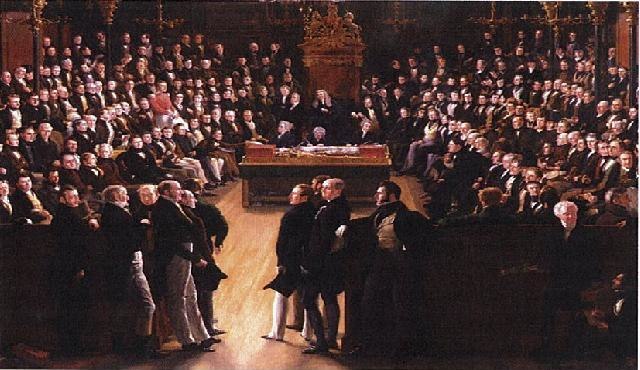The Land Acts were a series of measures to deal with the question of tenancy contracts and peasant proprietorship of land in Ireland in the nineteenth and twentieth centuries. Five such acts were introduced by the government of the United Kingdom between 1870 and 1909. Further acts were introduced by the governments of the Irish Free State after 1922 and more acts were passed for Northern Ireland.
Original 1906 Labourers' Act cottage, as seen in 1977
United Kingdom of Great Britain and Ireland
The United Kingdom of Great Britain and Ireland was a sovereign state in Northwestern Europe that was established by the union in 1801 of the Kingdom of Great Britain and the Kingdom of Ireland. The establishment of the Irish Free State in 1922 led to the remainder later being renamed the United Kingdom of Great Britain and Northern Ireland in 1927.
The signing of the Treaty of Ghent ending the war with the United States (by Amédée Forestier, c. 1915)
A painting by James Pollard showing Trafalgar Square before the erection of Nelson's Column
Opening of the Liverpool and Manchester Railway in 1830
The House of Commons, 1833 by George Hayter commemorates the passing of the Reform Act of 1832. It depicts the first session of the newly reformed House of Commons on 5 February 1833. In the foreground, the leading statesmen from the Lords: Charles Grey, 2nd Earl Grey (1764–1845), William Lamb, 2nd Viscount Melbourne (1779–1848) and the Whigs on the left; and Arthur Wellesley, 1st Duke of Wellington (1769–1852) and the Tories on the right.





